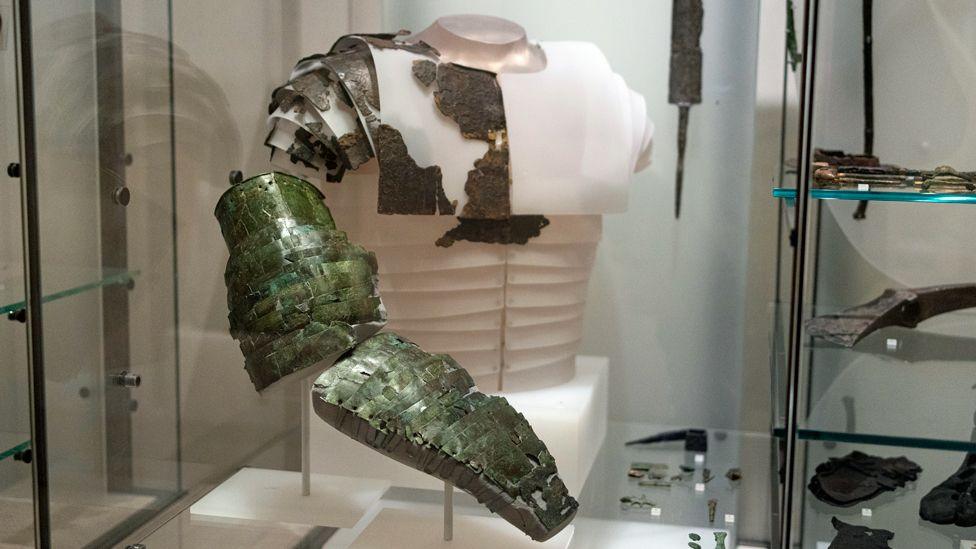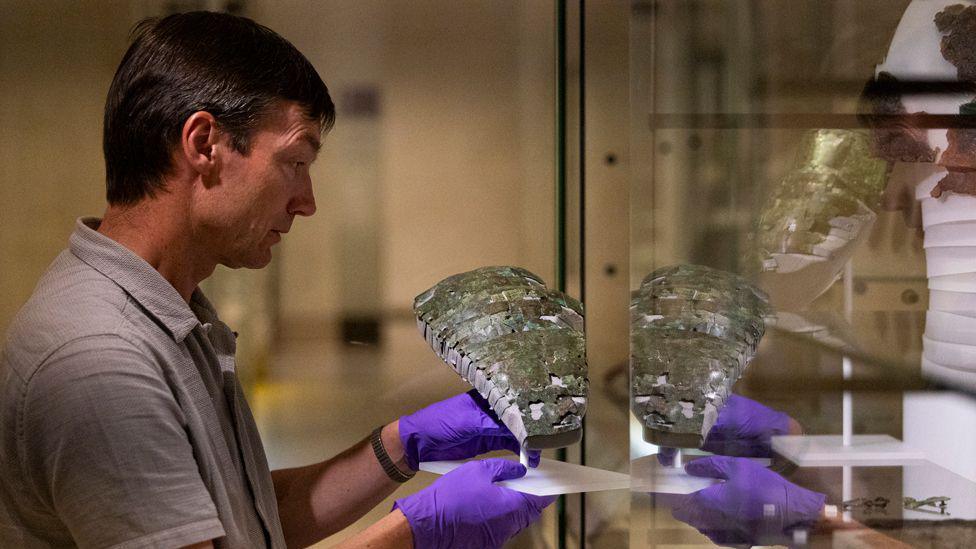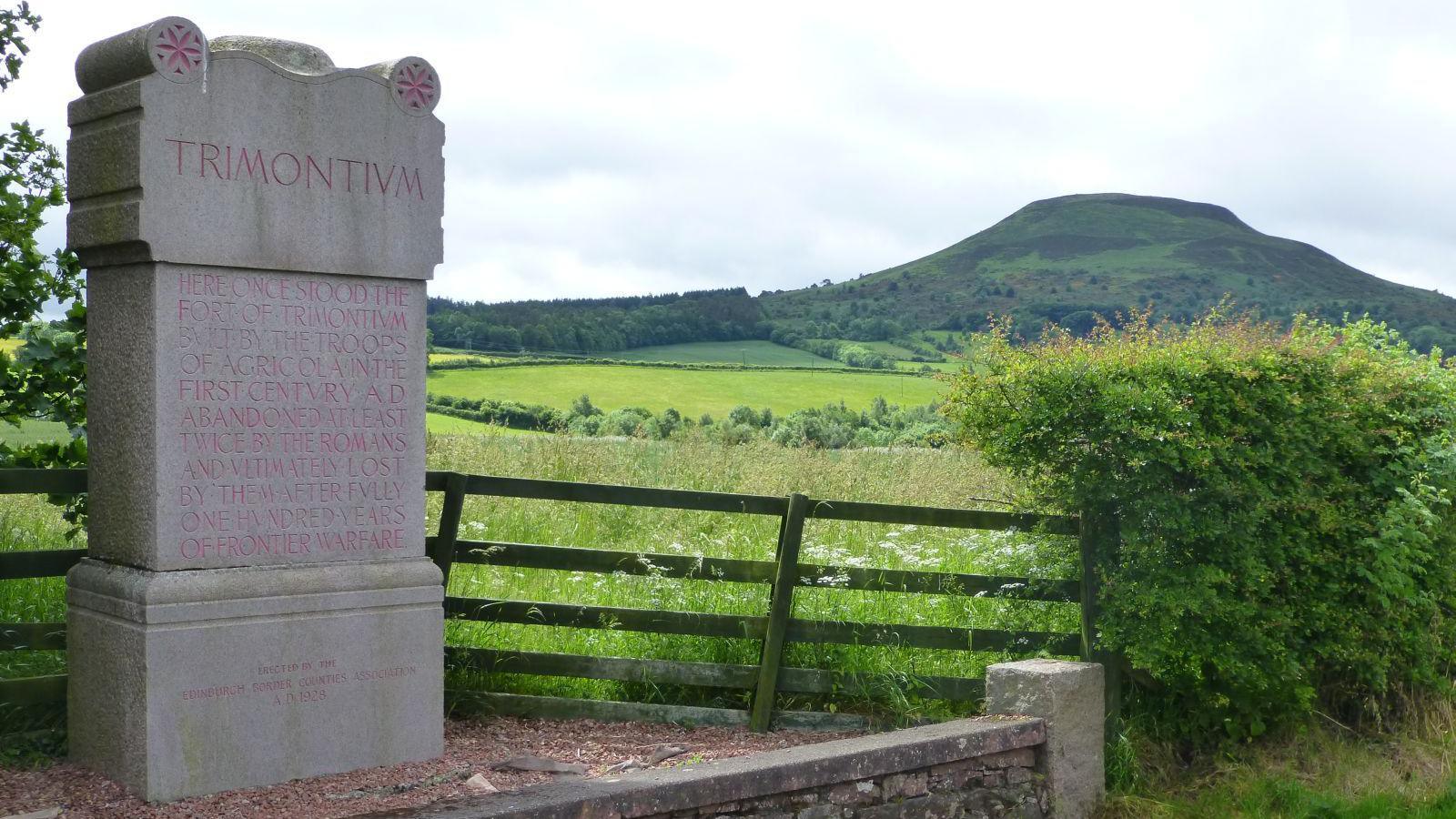Rare reconstructed Roman armour goes on display

The armour has been reconstructed from more than 100 pieces found in the Scottish Borders
- Published
A rare piece of Roman armour - reconstructed from dozens of fragments - has gone on display in its entirety for the first time in Scotland.
Dating from the middle of the 2nd Century, the brass arm guard is the most intact example of its kind and one of only three known from the whole Roman Empire.
The armour was discovered in over 100 pieces at the site of the Trimontium Fort near Melrose in 1906.
It has now gone on permanent display at the National Museum of Scotland in Edinburgh.

The arm guard took weeks to rebuild earlier this year
The armour is said to be in "remarkably good condition", with remnants of leather straps still attached to the metal.
Conservators in Edinburgh spent weeks rebuilding the arm guard earlier this year.
It went on loan to the British Museum’s exhibition Legion: Life in the Roman Army and has now gone on display in Scotland.
Dr Fraser Hunter, principal curator of prehistoric and Roman archaeology at National Museums Scotland (NMS), said he was delighted people could now see the "rare and special object".

The armour was found near the site of an old Roman fort in the Borders
"Brass armour like this would have been expensive and would have acted as both a means of protection and an eye-catching status symbol," he said.
"The arm guard is displayed alongside a well-preserved section of iron body armour uncovered in the same building of the fort, and together they offer a tantalising glimpse into the life of a legionary in Roman Scotland."
The fragments have been in the NMS collection for more than a century.
Before being fully reconstructed, the upper section was on display for 25 years, with the lower section loaned to the Trimontium Museum and dozens of fragments stored at the NMS collection centre.
The arm guard stretches down from the shoulder and ends in a thin square of metal.
It would have protected the wearer's hand, a design that may have been inspired by the equipment worn by gladiators fighting in the arena.
Experts initially believed it would have been body armour, and it was later thought to be a thigh guard for a cavalryman.
It is only in recent years that its true function has been understood.
Trimontium, meaning the place of three hills, was the site of a large frontier fort set up in the 1st and 2nd Centuries AD.
It grew in size and importance to support a population of up to 3,000 at its peak and lasted for about 100 years.
A museum in Melrose still carries its name and contains artefacts from the Roman occupation of southern Scotland.
Get in touch
What stories would you like BBC News to cover from the south of Scotland?
Related topics
- Published22 April 2022
